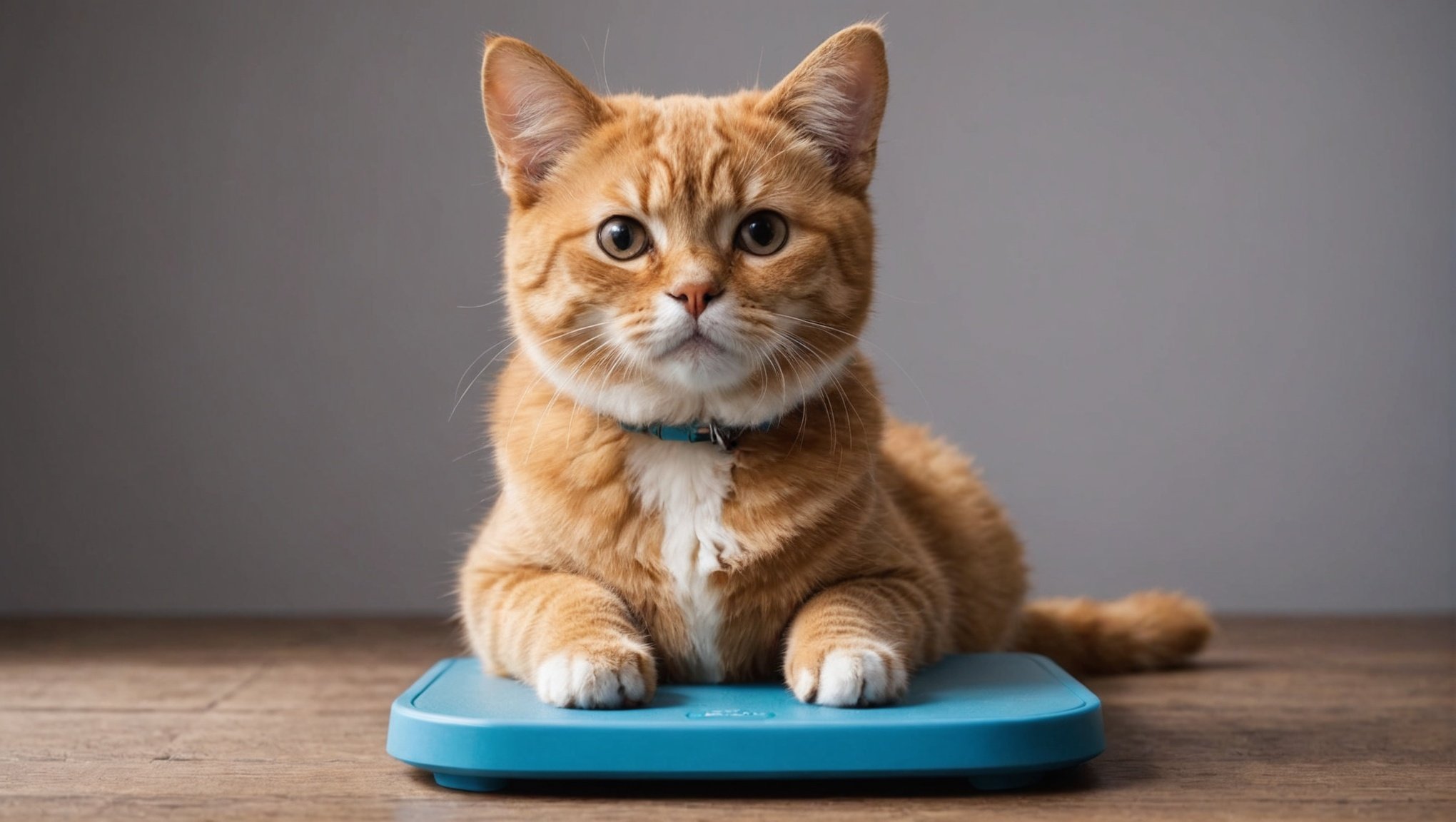Top Strategies for Effectively Managing Your Pet’s Weight Gain
Managing your pet’s weight is a crucial aspect of ensuring their overall health and well-being. With the rising rates of pet obesity, it’s more important than ever to implement effective strategies to prevent and manage weight gain in your dog or cat. Here’s a comprehensive guide to help you navigate this critical issue.
Understanding Pet Obesity
Before diving into the strategies, it’s essential to understand the scope and implications of pet obesity. According to recent surveys, approximately 60% of dogs and cats in the US are considered overweight or obese.
Topic to read : Essential Tips for Seamlessly Integrating a New Ferret into Your Existing Group
The Effects of Added Weight
Pet obesity is not just a cosmetic issue; it has severe health implications. Dr. Klein from the American Kennel Club highlights that obese dogs are more prone to medical conditions such as osteoarthritis, high blood pressure, skin infections, respiratory disorders, renal dysfunction, diabetes, and heart disease.
Also read : Training Your Dog to Detect and Alert You to Seizures: A Comprehensive Guide
For senior dogs, the risks are even more pronounced due to decreased activity levels and other age-related factors. Certain breeds, like Basset Hounds, Beagles, Labrador Retrievers, and Dachshunds, are more susceptible to weight gain and associated health issues.
Creating a Healthy Diet Plan
A well-structured diet plan is the cornerstone of weight management for your pet.
Type of Food
Therapeutic food dominates the pet obesity management market, capturing a significant 89.49% share due to its high efficacy in managing pet obesity. These foods are specially formulated to provide all necessary nutrients while controlling caloric intake, making them a preferred choice among veterinarians.
Customized Diet Plans
Customized diet plans are tailored to the specific needs of your pet, considering factors like age, health status, and breed. These plans ensure that your pet receives the appropriate caloric intake and adjusted nutrient levels to support overall health and weight loss. For instance, Nestlé Purina PetCare and Mars Petcare, through their Royal Canin brand, offer advanced nutritional solutions that prioritize pet health and weight management.
Healthy Ingredients and Portion Control
Incorporating healthy ingredients such as sweet potatoes and pumpkin can add necessary fiber and healthy fats to your dog’s diet. However, portion control is crucial. Free pouring or “eye-balling” food portions is not effective; consistently measured portions are essential to maintain the recommended caloric intake.
The Role of Exercise in Weight Management
Exercise is a complementary yet vital component of weight management strategies.
Regular Physical Activity
For dogs, a daily walk of 30 to 60 minutes is a great starting point for optimum health. Indoor activities such as using pet toys, laser pointers, and cat trees can help keep cats active. Making exercise fun and engaging is key; activities that your pet enjoys will make the experience more pleasant and increase their willingness to participate.
Tailored Exercise Routines
Exercise programs should be tailored to the specific needs of your pet. For pets that do not naturally engage in sufficient physical activity, structured exercise routines can help increase energy expenditure. For example, using playthings that require effort to obtain food can slow down the rate of consumption and keep your pet busy and active.
Preventing Overfeeding and Managing Treats
Overfeeding is one of the most common mistakes in pet health, and managing treats is a critical part of weight management.
Avoiding Table Scraps and High-Calorie Treats
Table scraps and high-calorie treats should be minimized or eliminated. These can significantly contribute to your pet’s caloric intake and hinder weight loss efforts. Instead, opt for healthy treats such as carrots, cucumbers, green beans, and other pet-friendly fruits and vegetables. Ensure that treats do not exceed more than 10% of your pet’s total daily calories.
Healthy Treat Alternatives
Here are some healthy treat alternatives you can consider:
- Carrots
- Cucumbers
- Green beans
- Blueberries
- Mango
- Apples
- Watermelon
Remember to avoid toxic foods like grapes or raisins.
Additional Tips for Effective Weight Management
Here are some additional strategies to help you manage your pet’s weight effectively:
Regular Feeding Routine
Maintain a regular feeding routine by feeding your pet at the same time every day. This helps your pet learn to expect food at that time and reduces begging throughout the day.
Distractions to Control Appetite
When your pet begs for food, distract them with other activities they enjoy, such as going for a walk or playing with a toy. This can help manage their appetite and reduce overeating.
Make Them Work for Their Food
Use playthings that require effort to obtain food, such as puzzle toys filled with kibble. This can slow down the rate of consumption and keep your pet busy and active.
Consult Your Veterinarian
Your veterinarian is a valuable resource in managing your pet’s weight. They can advise on the number of calories and nutrients your pet needs, considering factors like age, breed, lifestyle, and activity level. Always follow veterinary advice to ensure a healthy and balanced diet and exercise routine.
Case Studies and Brand Initiatives
Several companies are taking proactive steps to address pet obesity through innovative products and initiatives.
Nestlé Purina PetCare and Mars Petcare
Nestlé Purina PetCare and Mars Petcare, through their Royal Canin brand, are recognized for their specialized veterinary diets targeting various health issues, including obesity. These diets are formulated in collaboration with veterinarians to ensure they meet the specific weight and metabolic needs of pets.
Dog Standards and PlantX Life Inc.
Dog Standards has launched a Topper program aimed at reducing obesity-related health risks in dogs. This program provides human-grade, gently cooked nutrition to supplement dogs’ regular meals, crafted by veterinary nutritionists to optimize nutrient intake without overfeeding. PlantX Life Inc. has also entered into a joint venture with LIV3 to introduce the SugarShield supplement, targeting the weight management market.
Table: Comparing Key Strategies for Weight Management
| Strategy | Description | Benefits |
|---|---|---|
| Customized Diet Plans | Tailored to specific pet needs, considering age, health, and breed. | Ensures appropriate caloric intake and nutrient levels. |
| Regular Exercise | Daily walks for dogs, indoor activities for cats. | Increases energy expenditure and maintains physical health. |
| Avoid Overfeeding | Minimize table scraps and high-calorie treats. | Prevents excessive caloric intake. |
| Healthy Treats | Use pet-friendly fruits and vegetables as treats. | Provides necessary nutrients without adding excess calories. |
| Regular Feeding Routine | Feed at the same time every day. | Reduces begging and maintains a structured feeding schedule. |
| Consult Veterinarian | Seek advice on calorie and nutrient needs. | Ensures a balanced and healthy diet and exercise plan. |
| Make Them Work for Food | Use puzzle toys filled with kibble. | Slows down consumption rate and keeps pets active. |
Practical Insights and Actionable Advice
Managing your pet’s weight is a long-term commitment that requires patience, consistency, and the right strategies.
Monitor Your Pet’s Body Condition Score (BCS)
Use the BCS system, which ranges from 1 to 9, to determine if your pet is at an ideal weight. An ideal body weight for dogs falls in the 5/9 or 6/9 range.
Be Aware of Misconceptions
Many pet owners are unaware of the reality of their pet’s health, often thinking their pets are at an ideal weight when they are not. Educate yourself on what a healthy weight looks like for your pet to avoid misconceptions.
Make It a Family Effort
Ensure everyone in the household is on the same page regarding your pet’s diet and exercise routine. Consistency is key to maintaining a healthy weight for your pet.
Managing your pet’s weight gain is a multifaceted task that involves a combination of a healthy diet, regular exercise, and careful management of treats and feeding habits. By understanding the risks associated with pet obesity, creating a customized diet plan, ensuring regular physical activity, and following additional tips, you can help your pet achieve and maintain a healthy weight.
As Dr. Alvarez from the American Kennel Club advises, “Weight isn’t something dogs can control on their own. They’ll most likely keep eating whatever amount of food is in front of them. That’s why it’s best to follow a structured feeding plan from when your pet is young, then into the adult and senior years.”
By taking these steps and consulting with your veterinarian, you can ensure your pet leads a healthy, happy life, free from the risks associated with obesity. Remember, every small change can make a significant difference in your pet’s health and well-being.






